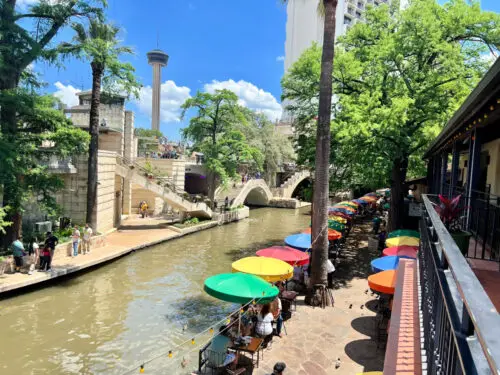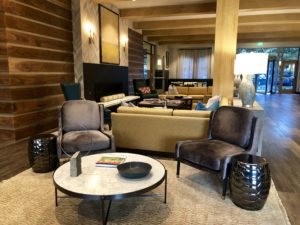History and music entwine along Mississippi’s Great River Road. Driving the state and county roads beside the mighty river was one of the best experiences of my life. Someday, I intend to explore it again – and I hope “someday” is someday soon. The Father of Waters defines most of the state’s western border and mightily influences its culture. But unfortunately, driving the Great River Road has one major drawback. Exploring takes a long time. You can’t hurry. Or maybe that’s a feature. Take life easy and explore.
I drove the national scenic byway from north to south, and this article will follow my path. If you want to travel south to north, just reverse the order.
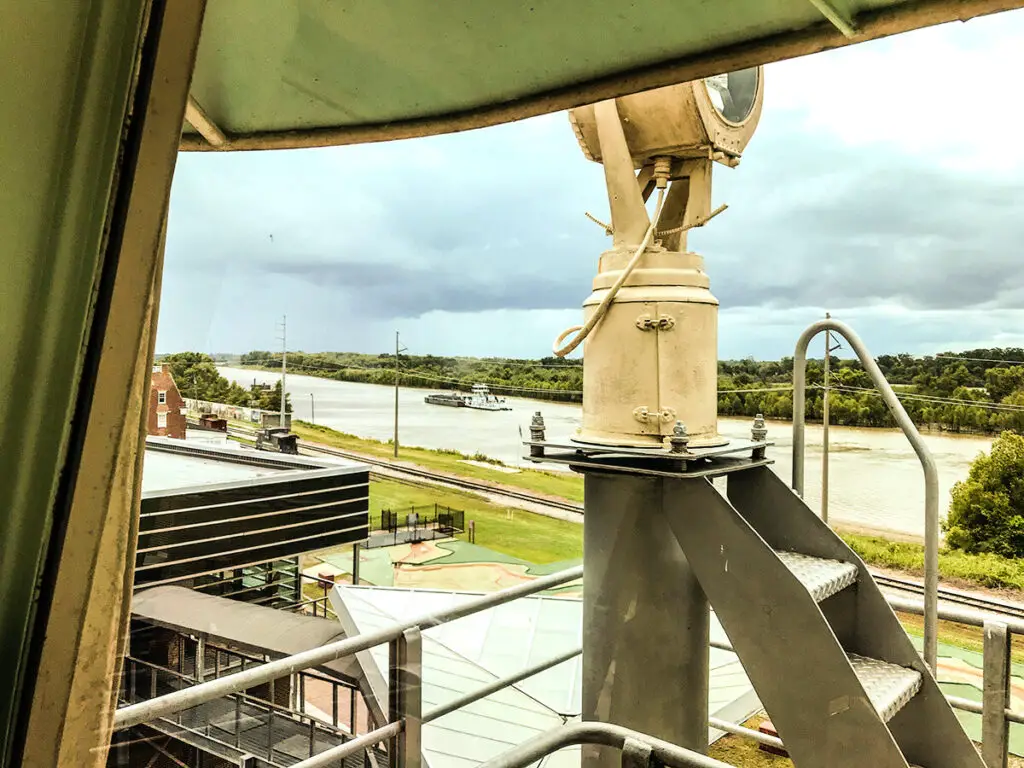
Start in Memphis
The easiest way to start your Great River Road experience is to start at Memphis, a major music destination itself. From Memphis, our first stop is only half an hour southwest.
Tunica, Gateway to the Blues
The Mississippi Delta is an expanse of utter flatness, forcing the Big Muddy to wind as it endlessly seeks the sea. Fields stretch to the horizon, interspersed with groves of trees. A haze often hangs in the air. Yet, even if no music is playing, the weight of the blues fills the air.
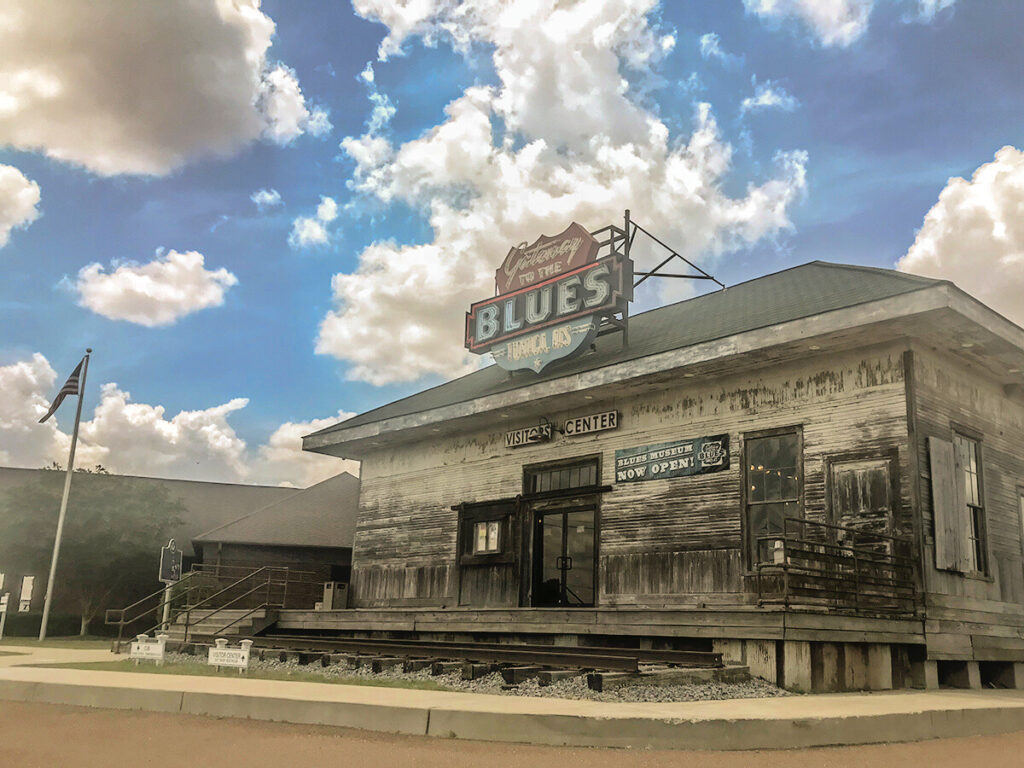
Open your Mississippi Great River Road experience at the Gateway to the Blues Museum at Tunica Resorts. The battered building with a neon sign evokes the era that spawned the blues. Blues music pours from the outdoor speakers, completing the ambiance. The 1895 building was a train depot. The front section is the local visitors center, and the rear is a museum. You’ll feel the glory and the agony of the blues as you meet the artists and enter their world.
After Tunica, ease on down the road to Clarksdale.
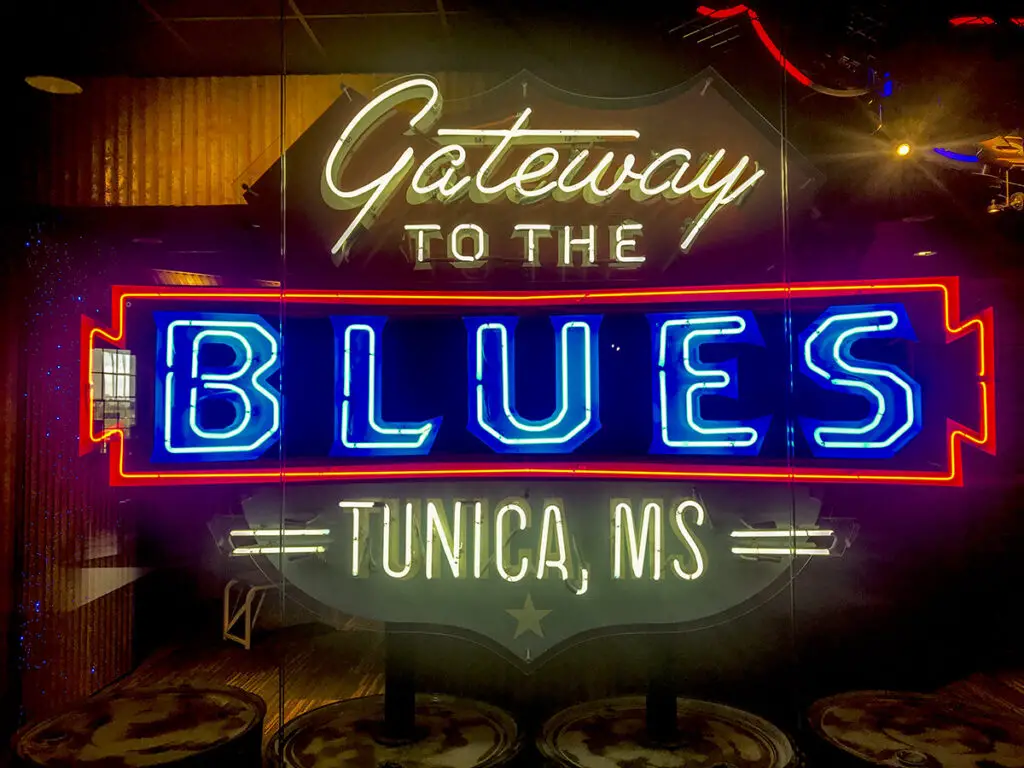
Clarksdale, Home of the Blues Crossroads
According to legend, bluesman Robert Johnson sold his soul to the devil at the Crossroads of Highways 61 and 49 in Clarksdale. The lore says the devil gave Johnson unmatched guitar skills in return. Whether Johnson picked up his musical genius naturally or supernaturally, he spawned numerous music genres – from the blues to rock to heavy metal.
To find the Crossroads, navigate to Highways 61 and 49’s intersection. A marker is in the middle of the junction, but you must look up to see it. The traffic was terrific, but I dared to cross the roads and stand below the marker. No devil was in sight.
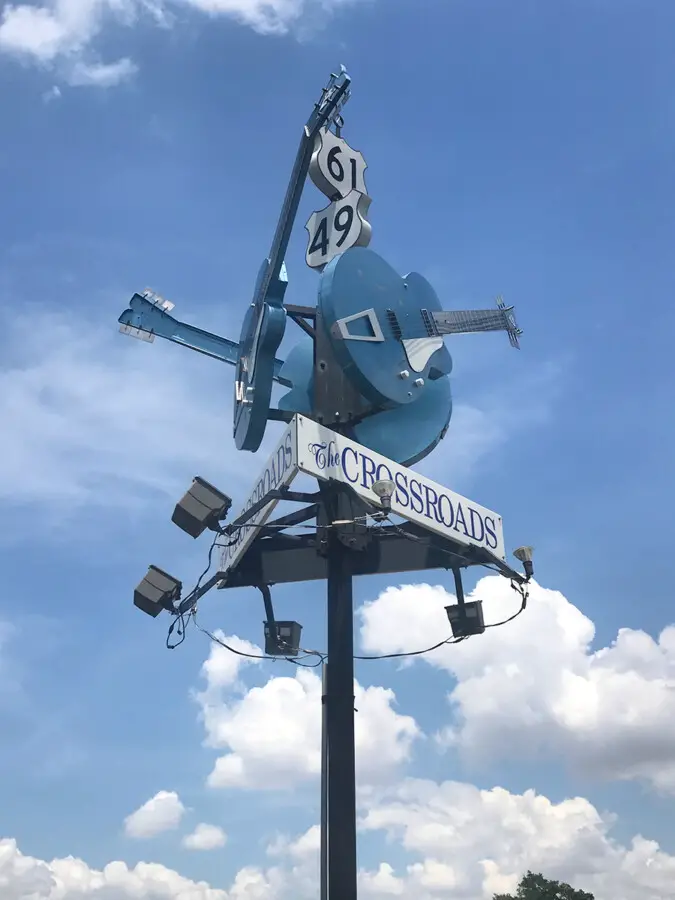
Savor “Swine Dining” at Abe’s Bar-B-Q across the street. Try the tamales and the chili cheeseburger. They come in regular and Big Abe sizes. Only choose the Big Abe option if you have Big Abe-sized appetites or want leftovers.
Pro tip: Look for more tamales on the Mississippi Delta Hot Tamale Trail.
Immerse yourself in more blues history at the Delta Blues Museum. Its collections include Muddy Waters’ cabin. It’s the state’s oldest music museum.
Fittingly, Clarksdale hosts blues concerts every day of the year, so check the schedule for dates. After an evening of the blues, stay in the Hooker Hotel, named for musician John Lee Hooker.
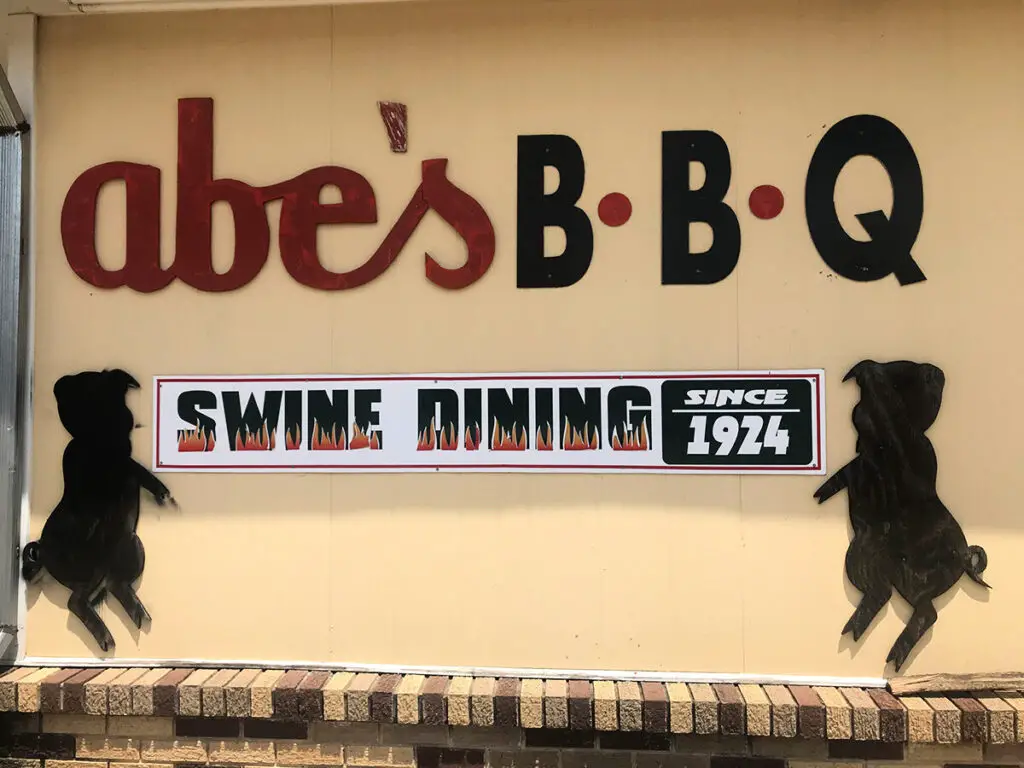
Cleveland, Home of the Grammys in Mississippi
The only Grammy museum outside Los Angeles is in Cleveland, MS. The museum is a comprehensive examination of all things Grammy. But don’t just listen to someone else’s music. Instead, create your own in the Singing & Songwriting/Producing Pods. Play instruments in the Roland Room.
Yes, Mississippi Mud is a famous pie recipe, but around Cleveland, mud becomes pottery. Find hand-crafted pieces at Peter’s Pottery in Mound Bayou and McCarty’s Pottery in Merigold.
Dockery Farms is 40 miles south of Cleveland. In 1895, Will Dockery bought 40 square miles of the delta to grow and process cotton. Unusually for the times, he offered better pay to his workers and fostered blues musicians. As a result, the farm became known as the Birthplace of the Blues. The grounds are open during daylight hours, and a stroll is very rewarding. When the farm isn’t hosting an event, guests may wander the grounds, but please donate in the box.
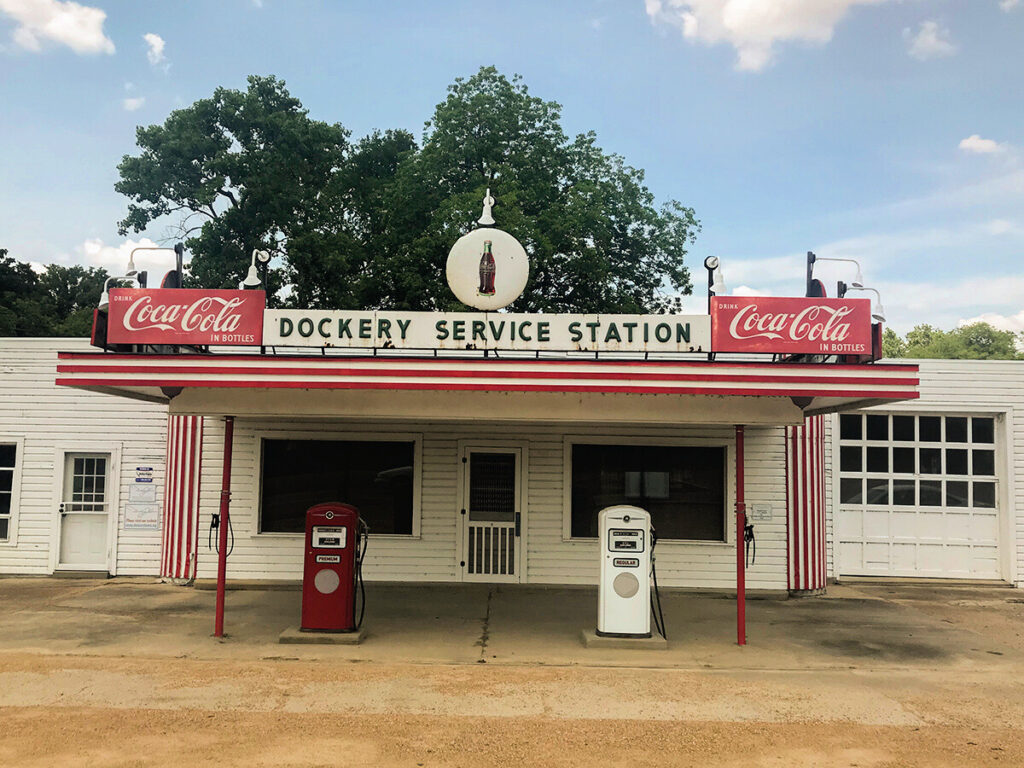
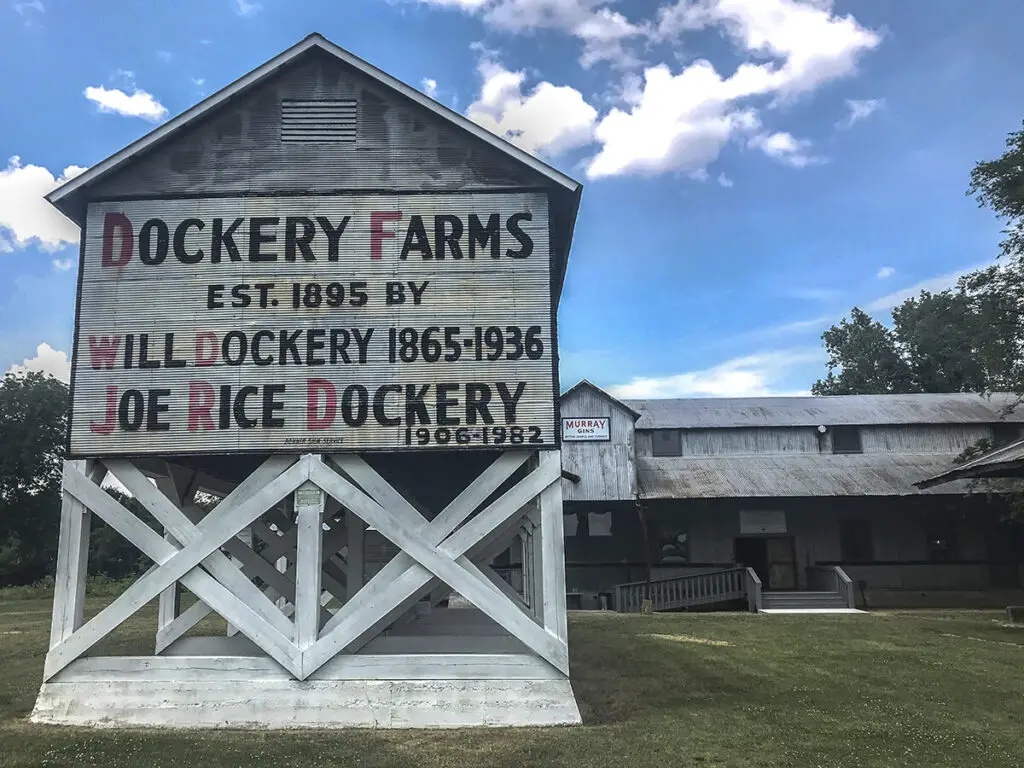
Greenville, Where Mound Builders Meet Kermit the Frog
The Mound Builders culture constructed six mounds in the Winterville Mounds complex. The highest one, Mound A, is 55 feet tall. For centuries, Mound A was the highest point between Emerald Mound in Natchez and Cahokia Mounds in Illinois. Next, explore more recent history in Greenville’s Delta’s Museum Mile. Start at the River Road Queen Welcome Center and Museum of the Delta.
If you’ve had your fill of museums, head to Leroy Percy State Park. It’s the state’s oldest and is full of springs and Spanish moss-draped trees. Pack a picnic and bring your boat. You may fish and hunt with the proper permits. People can hunt frogs, but the world’s most famous frog is not on the menu. Kermit the Frog’s creator Jim Henson grew up in Leland, and he donated memorabilia about The Birthplace of the Frog to his hometown.
Vicksburg, the Key to Victory
The flat Delta abruptly ends in steep bluffs and deep ravines at Vicksburg. During 1862 and 1863, Gen. Ulysses S. Grant sought to topple the city’s defenses. Union and Confederate troops clashed at Port Gibson, Bruinsburg, Grand Gulf, Champion Hill, Black River, and Jackson. Finally, he sealed the Confederates into Vicksburg. The Confederate commander Gen. John Pemberton held against the siege for 47 days. He surrendered on July 4, 1863. Five days later, Port Hudson, Louisiana, submitted to the Union, and the surrenders severed the Confederacy.
Vicksburg did not celebrate Independence Day for decades. The celebration did not revive until the Bicentennial, 1976.
To understand the war’s great turning point, walk the Vicksburg National Military Park. A vast collection of monuments decorates the battlefield. Of all of them, the Missouri State Memorial is the most heartbreaking. It stands 42 feet tall in honor of the 42 Missouri units that fought in the war. Twenty-seven were Union, and 15 were Confederate. The monument stands near the place where Missourians fired on each other.
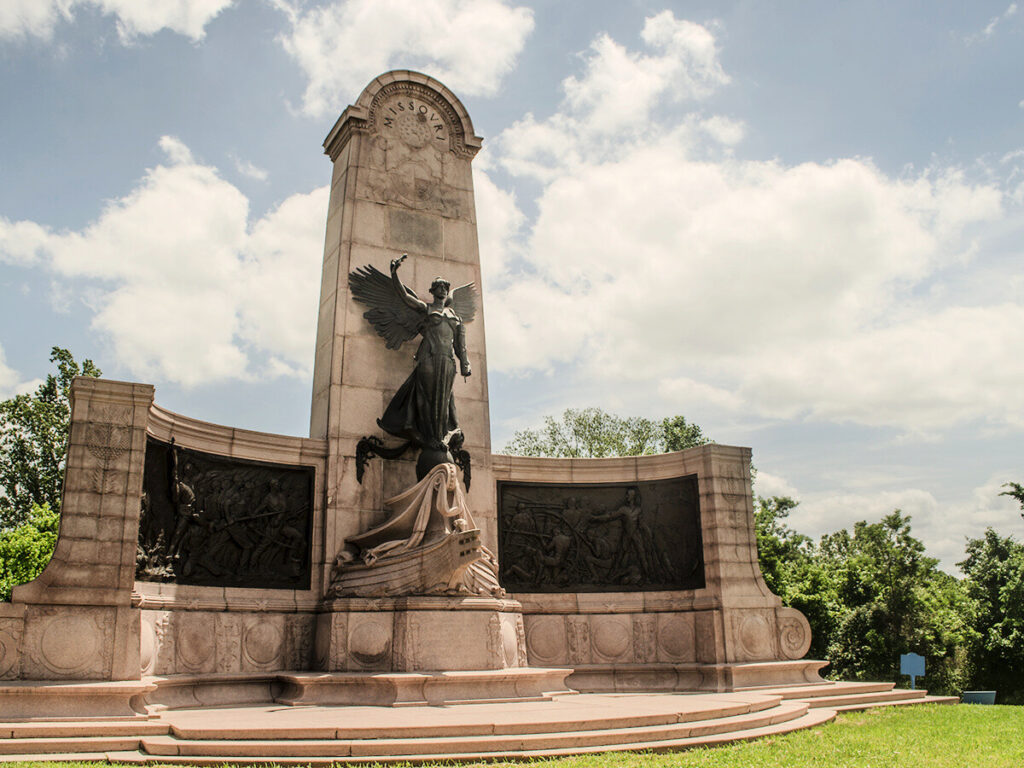
Furthering the theme of a brothers’ war, the Kentucky State Memorial honors the opposing Presidents, Abraham Lincoln and Jefferson Davis. Both were native Kentuckians. A sculpture of the pair in conversation symbolizes post-war reconciliation.
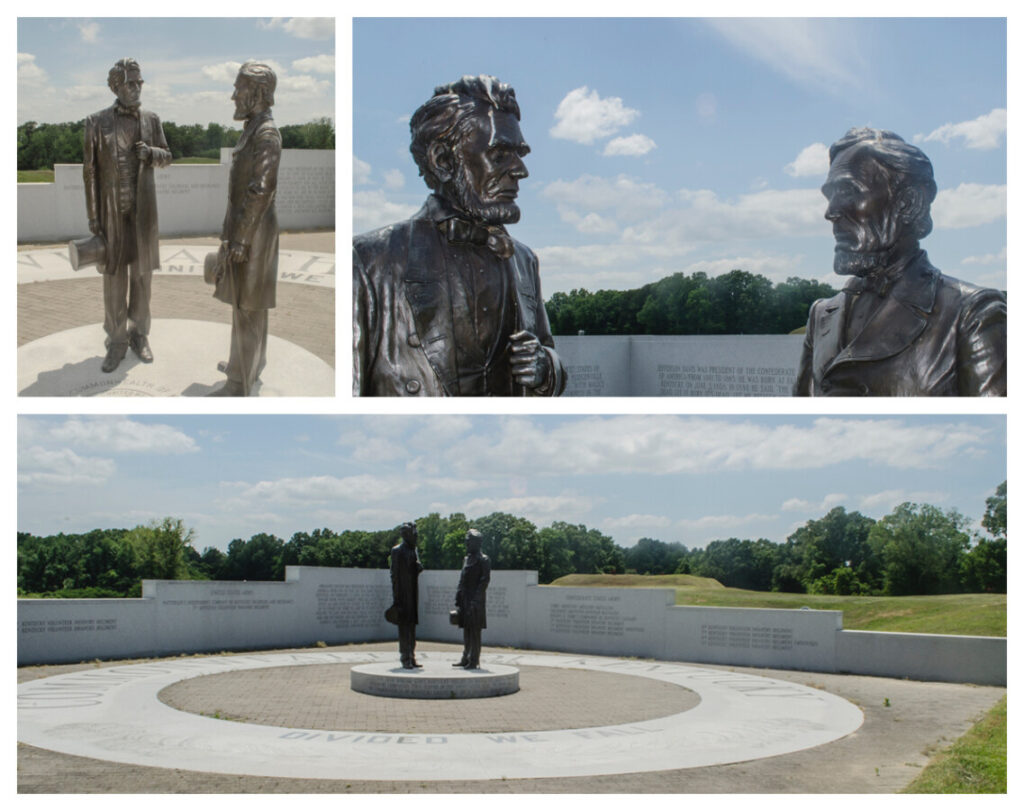
During your battlefield tour, visit the USS Cairo Gunboat and Museum and the Vicksburg National Cemetery. In addition, the Old Courthouse Museum presents the war as seen by Vicksburg’s citizens, plus gives an overview of more city history. Ironically, Davis began his political career with a speech there.
When you’ve had enough of the war, visit the Jesse Brent Lower Mississippi River Museum. We loved the towboat Mississippi VI and the Mississippi River Flood Model. Coke collectors must visit the Beidenharn Coca-Cola Museum. Learn more about Vicksburg’s culture at the upcoming Catfish Row Museum.
We always eat at Rusty’s Riverfront Grill. Then, visit the 10 South Rooftop Bar & Grill for amazing views and food. Stay in one of Vicksburg’s bed and breakfasts.
Port Gibson, Too Beautiful to Burn
When Grant saw Port Gibson, he allegedly called the city “too beautiful to burn.” As a result, many of the original antebellum homes remain in place. However, the city’s most beautiful mansion did burn. Just not from military action. The Windsor Ruins survived the Civil War only to burn to the ground in 1890. Only the mansion’s 29 columns remained. The site can be challenging to find, so bring a paper map. Visitors may walk around the area, but it has no facilities. With those precautions, a visit is well worth the effort. The ruins evoke a different time.
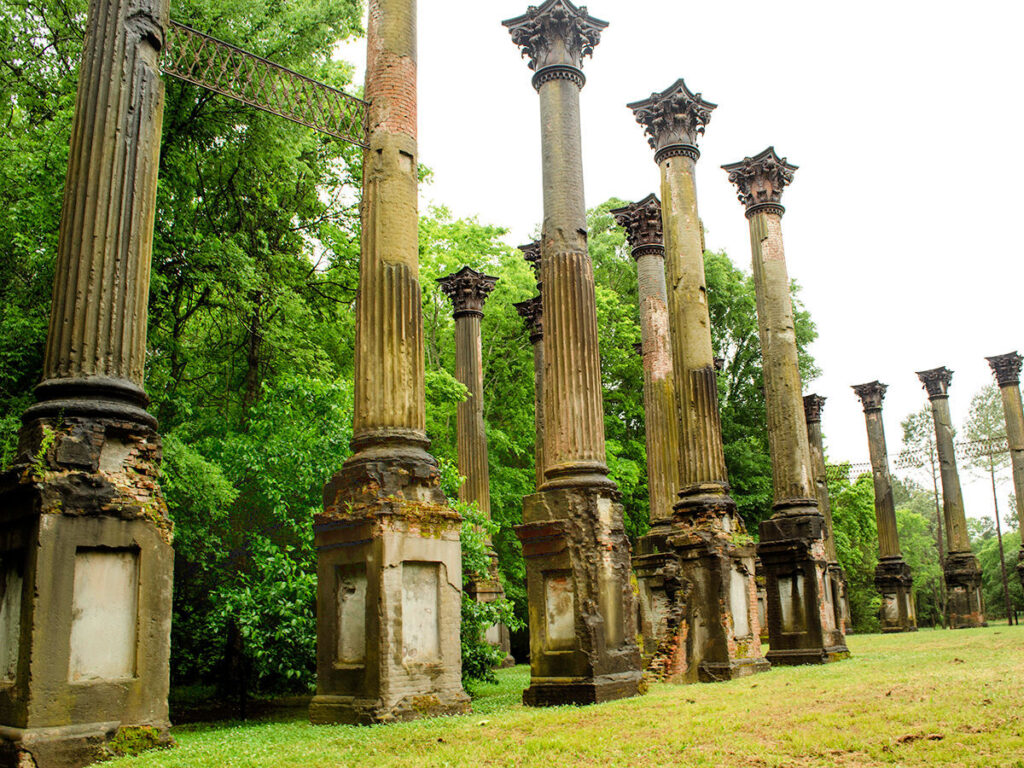
In Port Gibson, look for the astonishing golden pointing hand on the First Presbyterian Church’s steeple and the Moorish design on the Gemiluth Chesed Temple across the street.
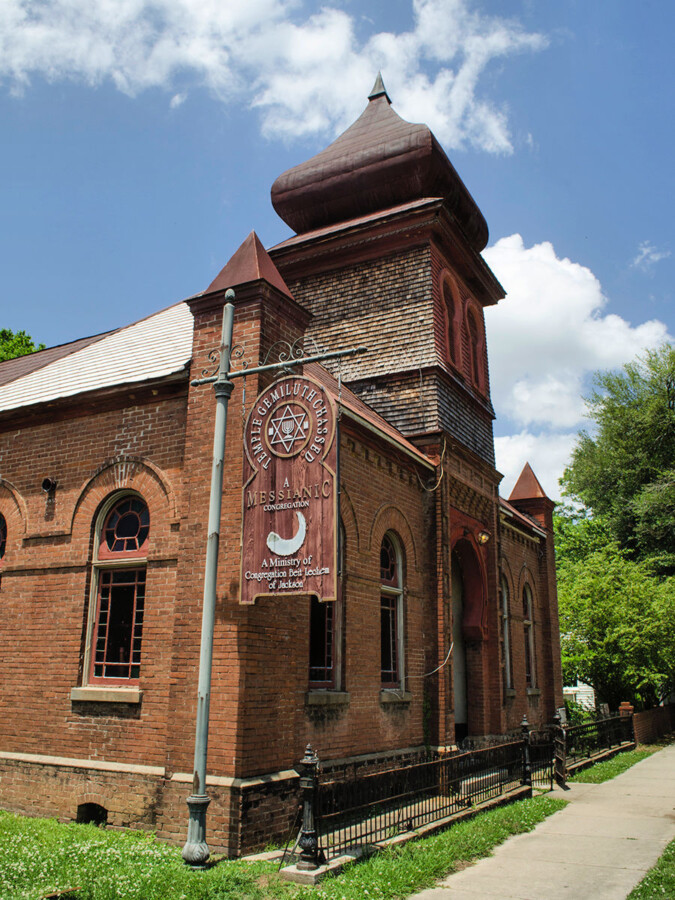
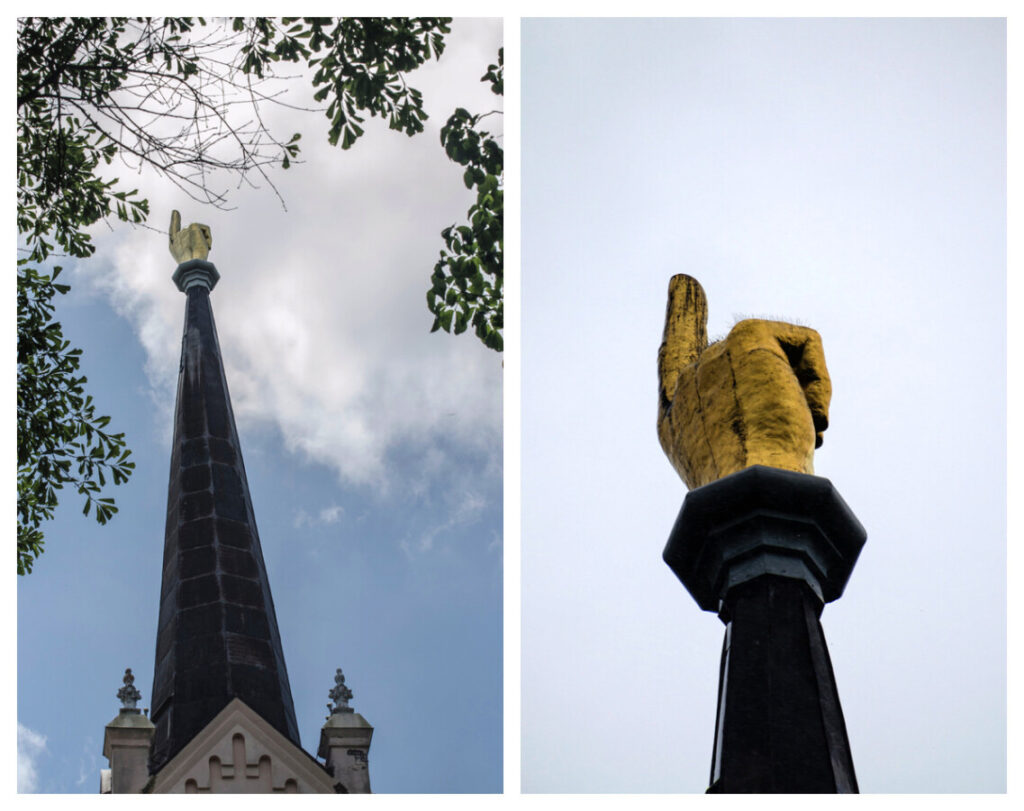
Follow the Natchez Trace
The Natchez Trace Parkway follows a trade route from Nashville, Tenn., to Natchez. From the ruins, head south toward Natchez. Stop at the Sunken Trace, Mt. Locust, and Emerald Mound on the way. The mound is 60 feet high and covers eight acres.
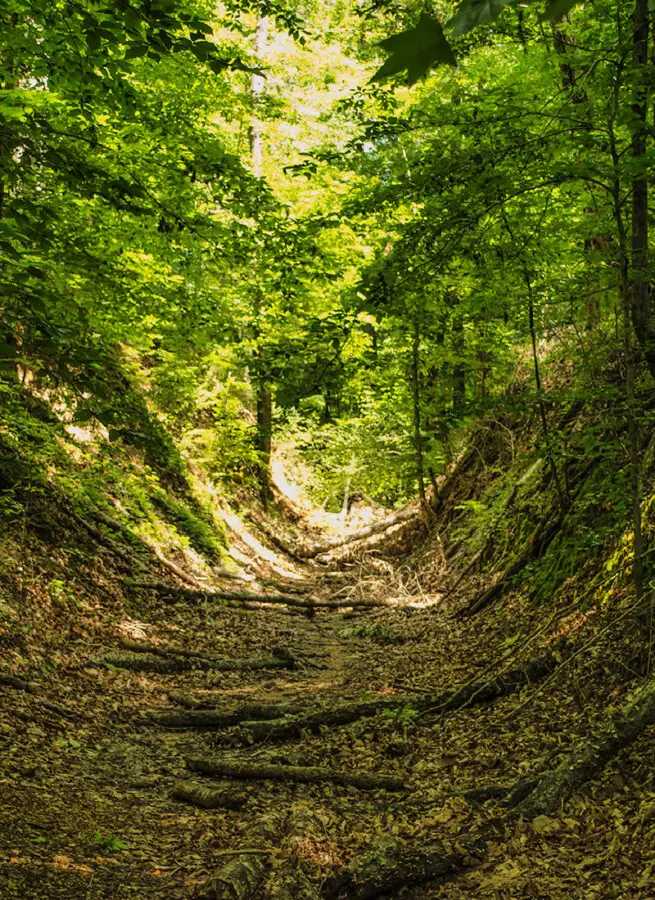
Natchez, Antebellum Splendor
While Vicksburg survived a siege, and Port Gibson was too beautiful to burn, Natchez surrendered before it could burn. Natchez’s decision left the city with an unmatched collection of spectacular historic homes. For example, Longwood is an unfinished fantasy. Workers were building it when Mississippi seceded. The workers were from the North, and they left. Eventually, the owners moved into the basement and left the fancy upstairs unfinished.
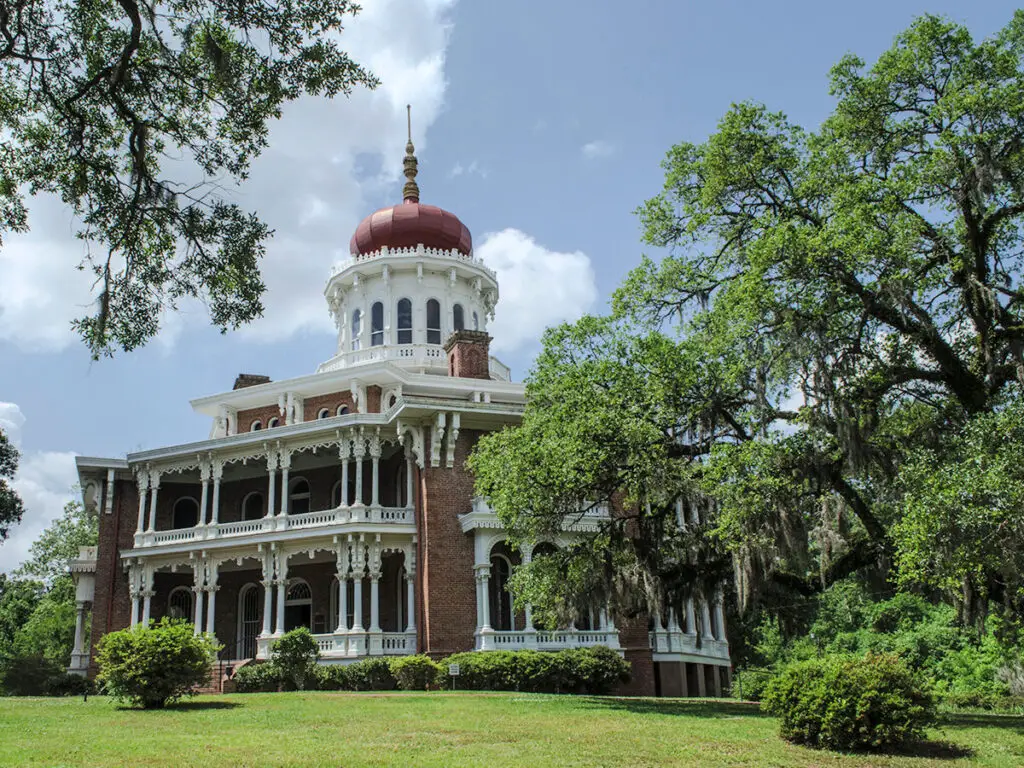
Auburn is another treasure with a lovely unsupported spiral staircase. Before restoration, the house stood open to the elements. Many children used the rails as an impromptu amusement park ride.
Pace yourself when you tour the homes to avoid overload. Research the ones that interest you and visit them first.
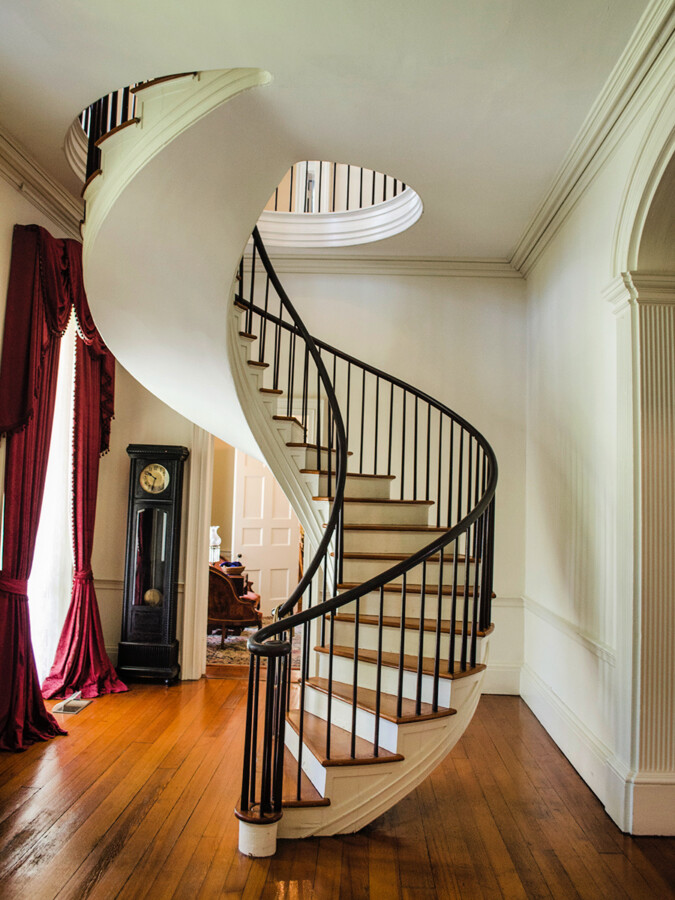
Before going gaga over the fancy houses, remember how they got there. On the backs of enslaved people. For context, visit Forks of the Road, the site of the Deep South’s second-largest slave market. For 30 years, the sellers incarcerated people in dungeons before selling them. The Natchez Museum of African-American Culture and History explains more.

Find your thrills at the Blueberry Hill River Cottage. Yes, it is on that hill. We loved sitting on the porch and watching the river traffic each evening. For another river view, stroll atop the Natchez levee system. We recommend dining at the Dunleith Castle Restaurant and Pub, Fat Mama’s Tamales, Natchez Coffee Company, Natchez Brewing Company and Kitchen.
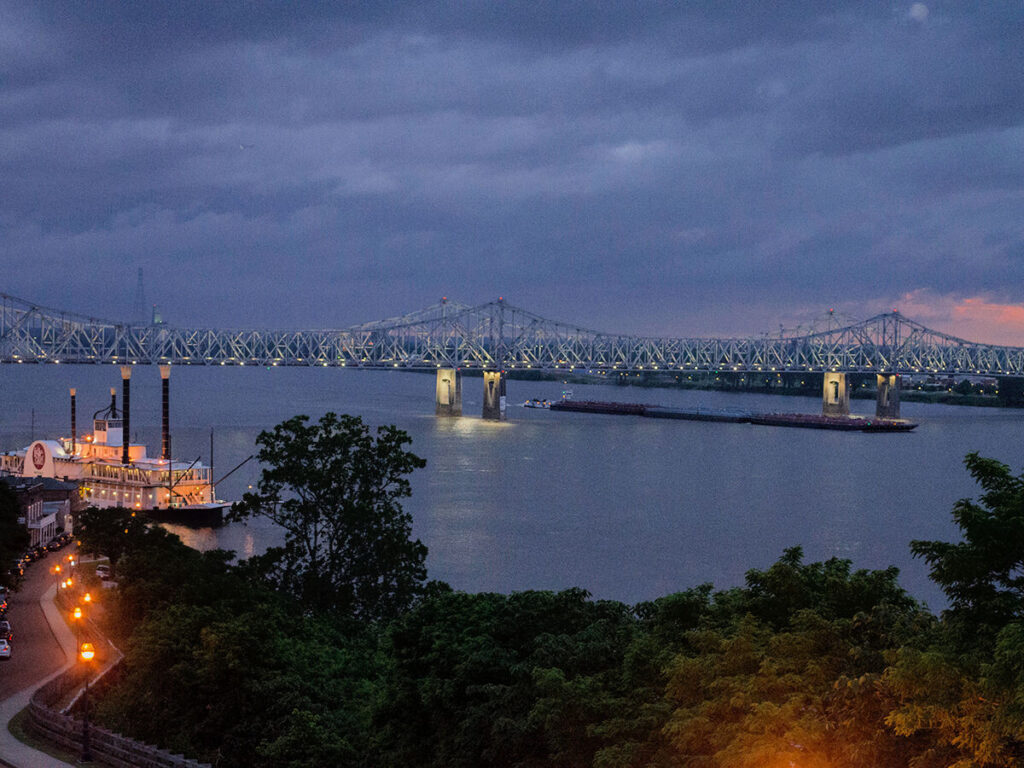
Woodville, The Southern Stop in Mississippi
We stopped at Woodville on a whim and discovered an amazing antiques mall, the Main Street Market. Browse more than two dozen booths and eat at the cafe. The food is delicious. The courthouse is lovely with its framing of sprawling live oaks.
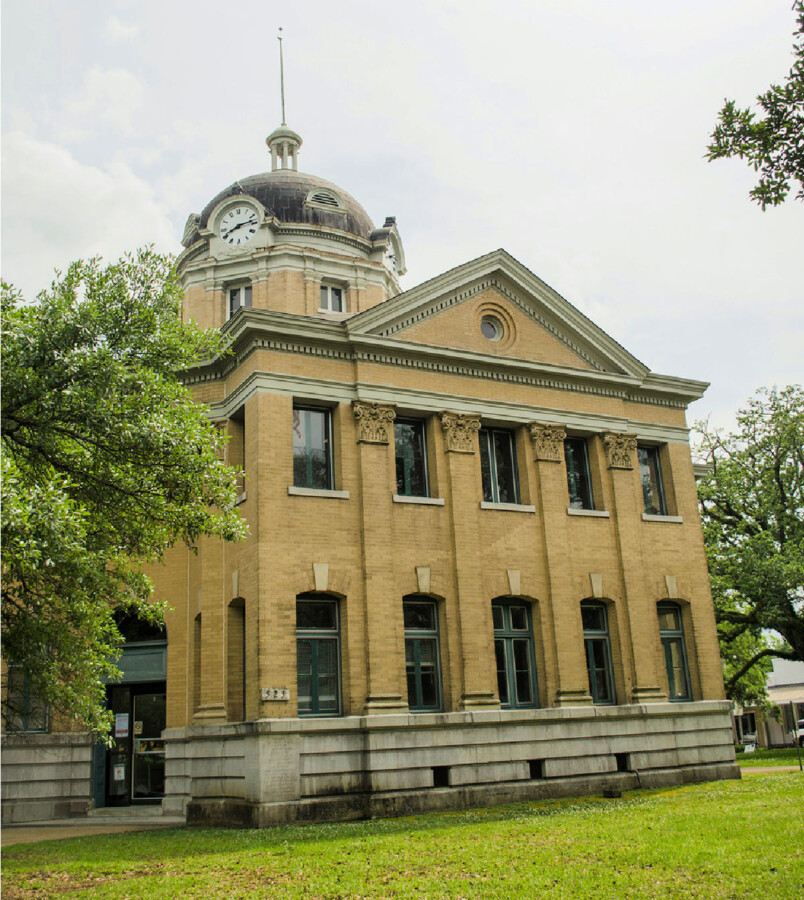
After shopping and eating, seek more than 30 waterfalls at nearby Clark Creek Natural Area.
We hope you’ll explore Mississippi’s Great River Road at your next opportunity.
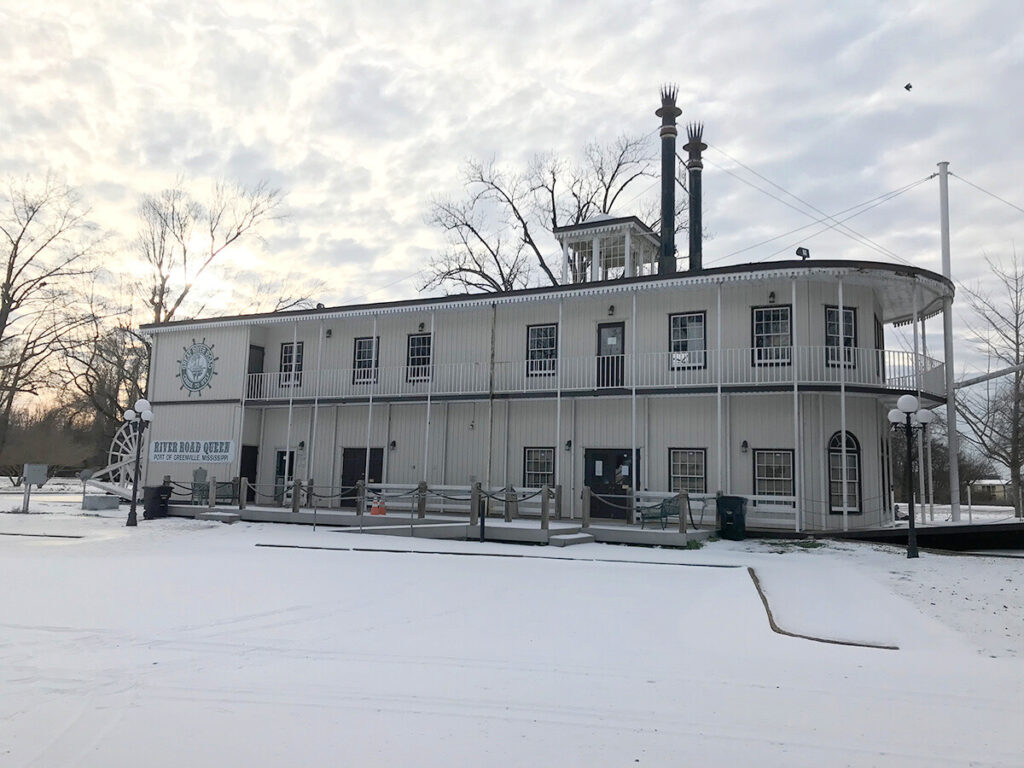
Article written by Destination Expert Roxie Yonkey of Roxie on the Road


